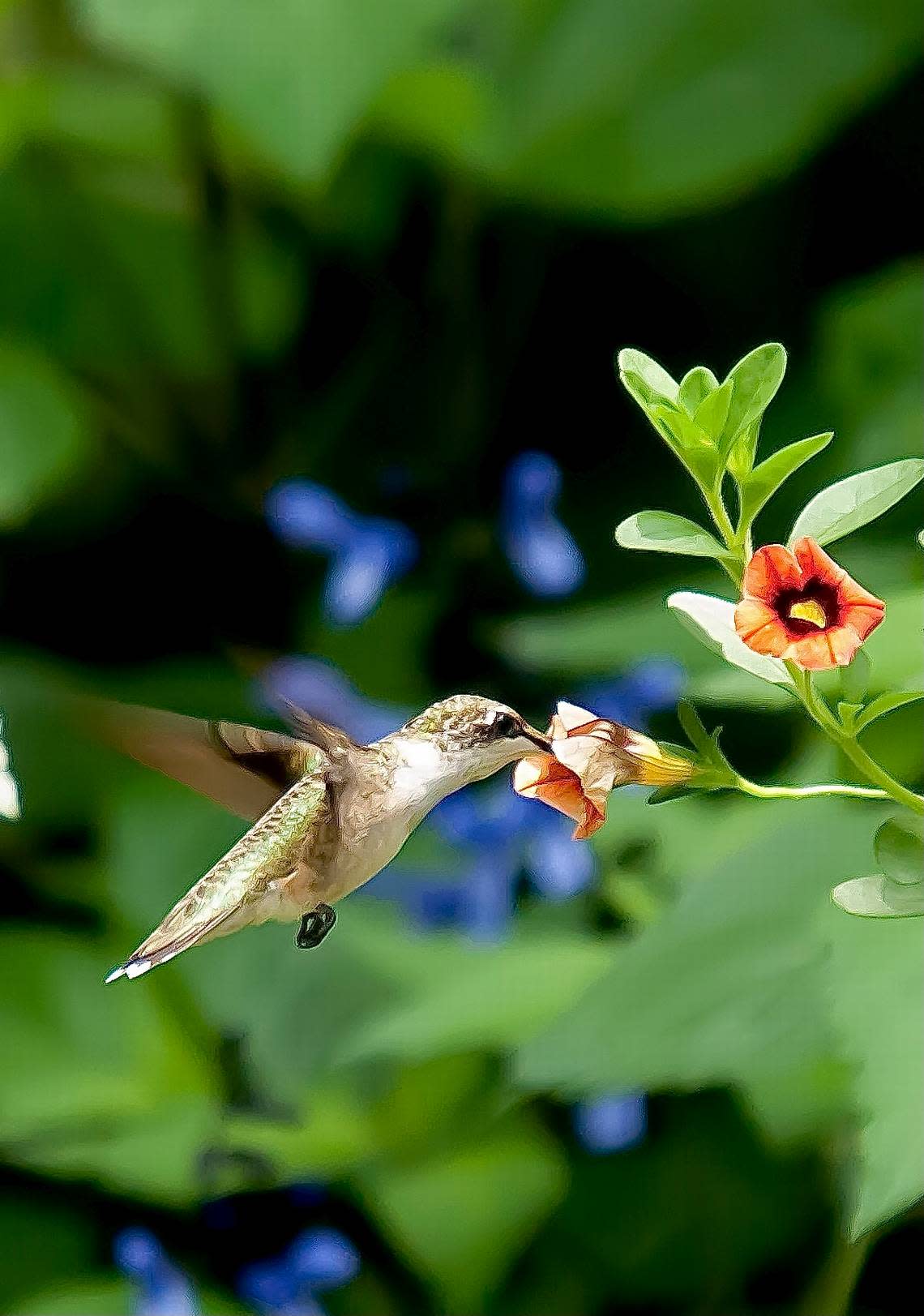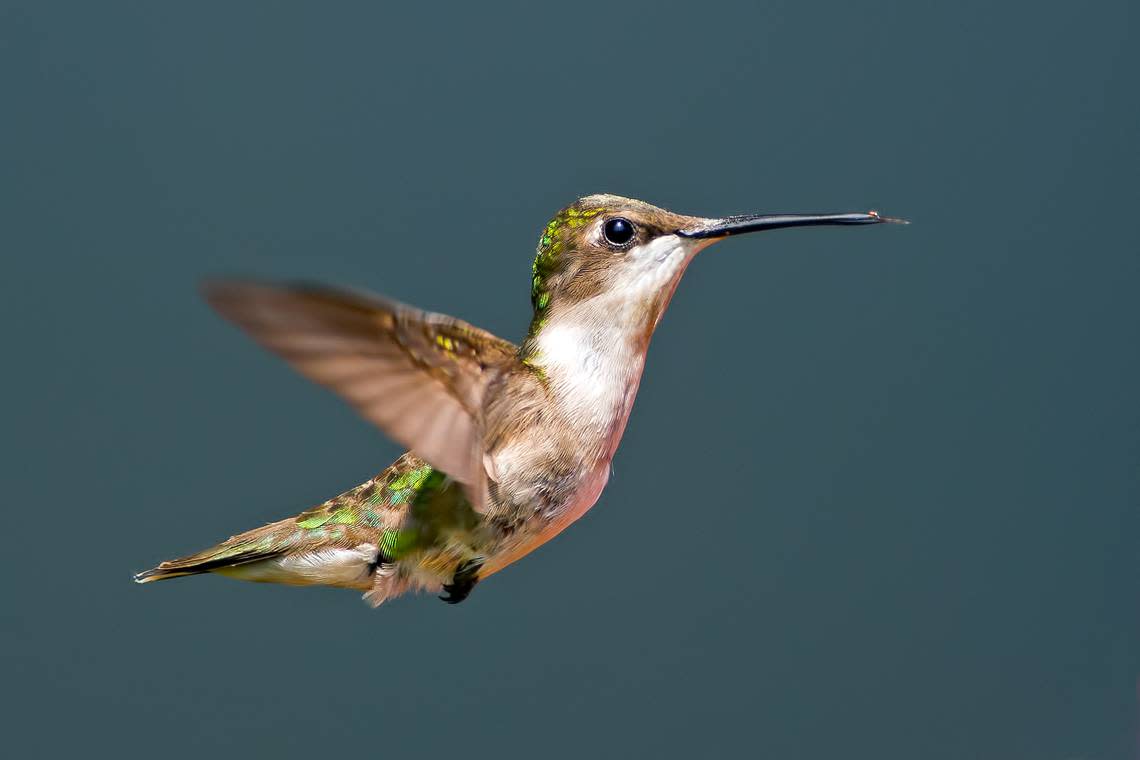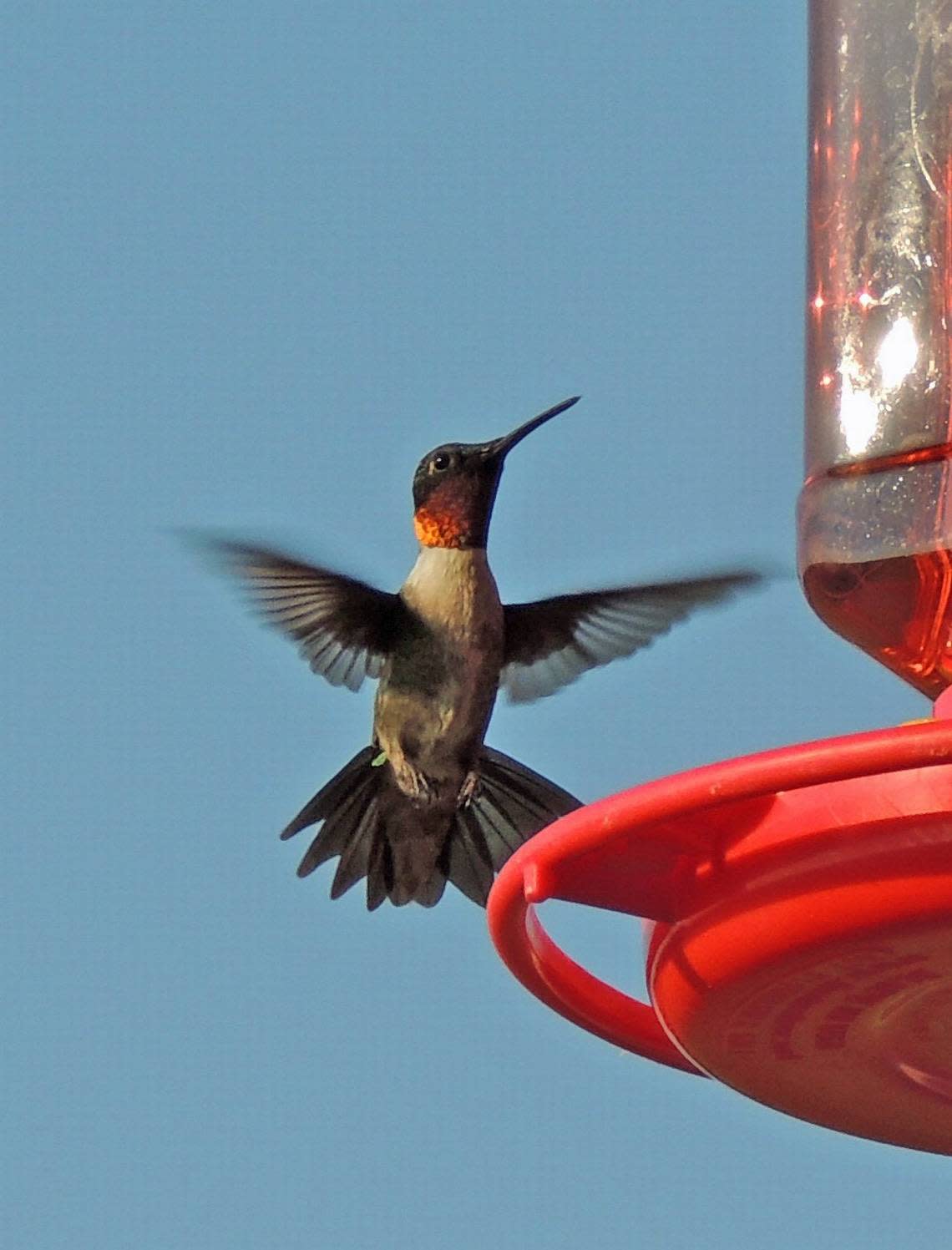We’ll soon see hummingbirds in NC. Here’s when to put out your feeders & how to attract them
We’ll soon start to see some tiny springtime companions fluttering around our backyards, swarming bird feeders and enjoying nectar from bright flowers once again.
The Ruby-throated hummingbird — North Carolina’s most prevalent hummingbird — will be migrating back to North Carolina and arriving by early April. So now’s the perfect time to get your backyard in shape to welcome our migrating guests.
The N&O spoke with the following experts to learn more:
Susan Campbell, the scientific director at Cape Fear Bird Observatory and a research affiliate focusing on hummingbirds with the NC Museum of Natural Sciences who’s been studying hummingbirds in North Carolina for nearly 30 years
Emma Greig, leader of The Cornell Lab of Ornithology’s Project FeederWatch
Andrew Farnsworth, a senior research associate with The Cornell Lab of Ornithology specializing in bird migration
Here’s what to know about the Ruby-throated hummingbird and how to prepare for its arrival.
When do we see the Ruby-throated hummingbird in NC?
People can expect to see their first hummingbird within the first two weeks of April, Campbell said.
▪ They’re prevalent all summer, spiking in April and again in late summer, Farnsworth said.
▪ Many may have seen their first by Easter (March 31).
Find a chart of bird observations in North Carolina by species at eBird.com to see just how many Ruby-throated hummingbirds are in our region in warm months.
These hummingbirds migrate to and from southern Mexico and Central America, Campbell said.

Do hummingbirds stay in NC all winter?
“Ruby-throated hummingbirds can start showing up in North Carolina as early as late March, but the bulk of the birds will be there in April,” Greig said.
“Some individuals do stay in the winter along the NC coast too, so there is always a chance of seeing a Ruby-throat in the middle of winter. But this is not very common.”
How to feed hummingbirds using a birdfeeder
▪ Opt for a red one: Hummingbirds’ favorite color.
“Hummingbirds can see red a half to three-quarters of a mile away. Their color vision is incredible,” Campbell said.
▪ DIY your nectar: Hummingbird feeders can be filled one-third of the way full with a 4:1 solution of sugar water using household white sugar.
Use the white table sugar in your house and filtered water, mixing ¼ cup of sugar with 1 cup of water. Do not use honey or artificial sweeteners, which can harm the birds.
“We know the sugar concentration in the flowers they eat, which this recipe can replicate,” Campbell said.
▪ No food coloring: The birds get all the vitamins, minerals and proteins they need from the natural nectar and insects they eat. The dye can just be harmful, she said.
▪ Avoid store-bought solutions: “Hummingbird products you can buy at the store are unnecessary for birds at best and harmful at worst,” Campbell said.
The bird feeding industry is “completely unregulated,” she said, so a lot of packaging has false information. The chemicals and dye inside store-bought solutions can seriously harm the birds.
It’s always better to make homemade nectar than buy anything from the store.
▪ Clean often (and correctly): Your sugar water solution should not sit in your feeder until it runs out, as it’ll spoil way before the birds can drink it all. The homemade nectar will spoil after a week, and it’ll ferment much quicker when temperatures are 80 and above in the summertime.
Clean your feeder with hot water only (be sure to avoid washing with soap or detergent) once a week with a bottle brush. Amp up the frequency to every two to three days in hot weather.
At least once a month, you should use a bleach solution (¼ cup bleach to 1 gallon of water), letting the feeder sit in this solution for an hour. Rinse and clean with a bottle brush.

Plant these flowers to attract Ruby-throated hummingbirds
“Planting for them is better than providing feeders. When they’re feeding through plants, they get minerals and other things in plant nectar they really need,” Campbell said.
▪ Plant native: Planting native flowers and native vegetation is much more beneficial for hummingbirds than putting out bird feeders, since hummingbirds’ main source of food are small, soft-bodied insects.
“Those tiny insects are native, which are associated with native vegetation,” she said.
▪ Avoid lawn chemicals: You also shouldn’t use herbicides or pesticides in your yard, as these chemicals will impact the insects these hummingbirds need.
Our area’s hummingbirds will love these plants, Campbell said. They have brightly colored flowers, and most are sun-lovers that bloom prolifically in summertime.
Plant these perennials for hummingbirds:
Anise-scented sage (Salvia guaranitica)
Van Houttei’s sage (Salvia splendens)
Pineapple sage (Salvia elegans)
Cherry Chief or Cherry Queen (Salvia greggii)
Turk’s cap (Malvaviscus drummondii)
Cigar plant (Cuphea spp.)
Trumpet creeper (Campsis radicans)
Butterfly bush (Buddleia)
Lantana (Lantana spp.)
Or these annuals:
Texas sage (Salvia coccinea)
Morning glory (Ipomoea spp.)
Mexican sunflower (Tithonia)
Impatiens (Impatiens)

What does the Ruby-throated hummingbird look like?
Here’s what The Cornell Lab of Ornithology’s “All About Birds” website says:
▪ Size & Shape: The Ruby-throated hummingbird is a small hummingbird with a slender, slightly down-curved bill and fairly short wings that don’t reach all the way to the tail when the bird is sitting.
They’re categorized as being “sparrow-sized” or smaller, measuring seven to nine centimeters long with a wingspan of eight to 11 centimeters.
▪ Color Pattern: Ruby-throated hummingbirds are bright emerald or golden-green on the back and crown, with gray-white underparts. Males have a brilliant iridescent red throat that looks dark when it’s not in good light.
“But they do not all have red throats. In fact, females don’t have any red on them at all. They are only green and white to help them blend into vegetation because of the amount of time they spend at the nest,” Campbell said.
“Only males have iridescent red throats, and you can’t see the red hue on many of the birds. Instead, it can look brown or black, making it hard to identify the bird without binoculars or bright light.”
▪ Behavior: Ruby-throated hummingbirds fly straight and fast but can stop instantly, hover, and adjust their position up, down, or backwards with exquisite control.
They often visit hummingbird feeders and tube-shaped flowers and defend these food sources against others. You may also see them plucking tiny insects from the air or from spider webs.
▪ Habitat: Ruby-throated hummingbirds live in open woodlands, forest edges, meadows, grasslands, parks, gardens and backyards.
(Source: allaboutbirds.org/guide/Ruby-throated_Hummingbird/id)
